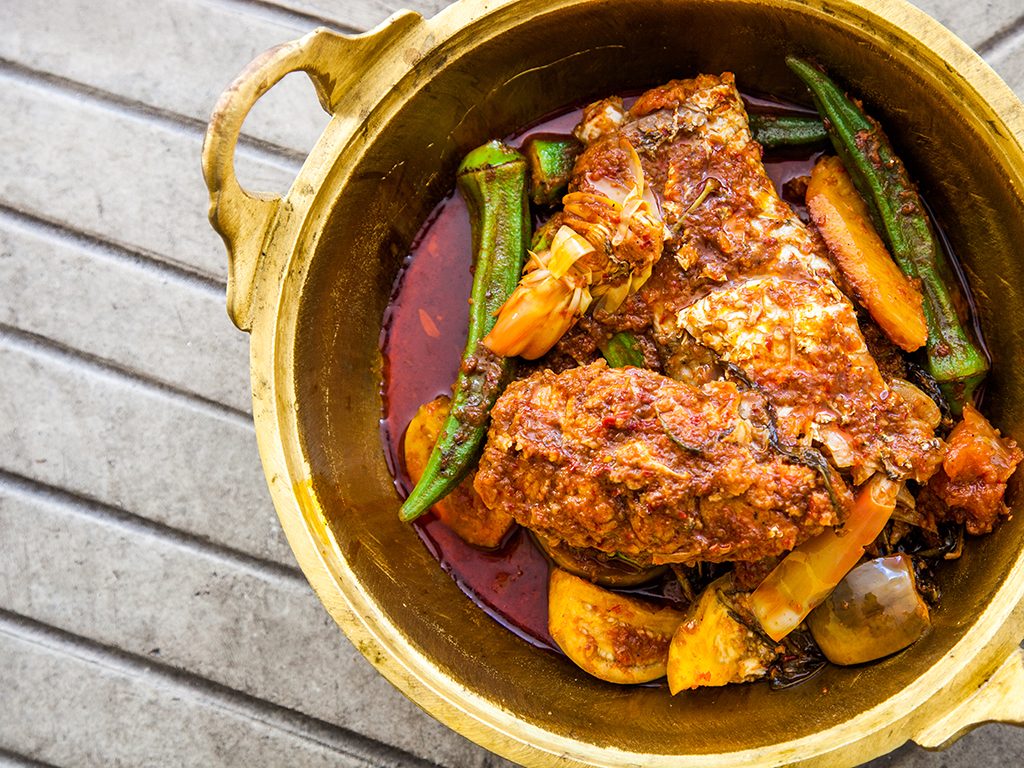
Malaysian food is hardly shy when it comes to flavours. Unlike a ‘hint of this or a hint of that’ which is regularly used to describe much of Western cooking, we often unashamedly use various flavours and ingredients to titillate all our available tastebuds at one go. After all, there is no reason why a particular dish should not taste sweet and sour all at the same time, right? And if it can be spicy too, even better! Enter the assam fish, a saucy dish that is a twist on the traditional asam pedas recipe.
Unlike asam pedas, assam fish introduces a sweet element to the dish with the addition of pineapples. With a cooking time of about an hour, and a fairly lengthy list of ingredients, assam fish one of those dishes typically reserved for special feasts with family and friends. Of course, you’re more than welcome to cook up a batch of assam fish for your own self-indulgence, but we recommend scaling down the ingredients below according to the size of your fish.
Enjoy!
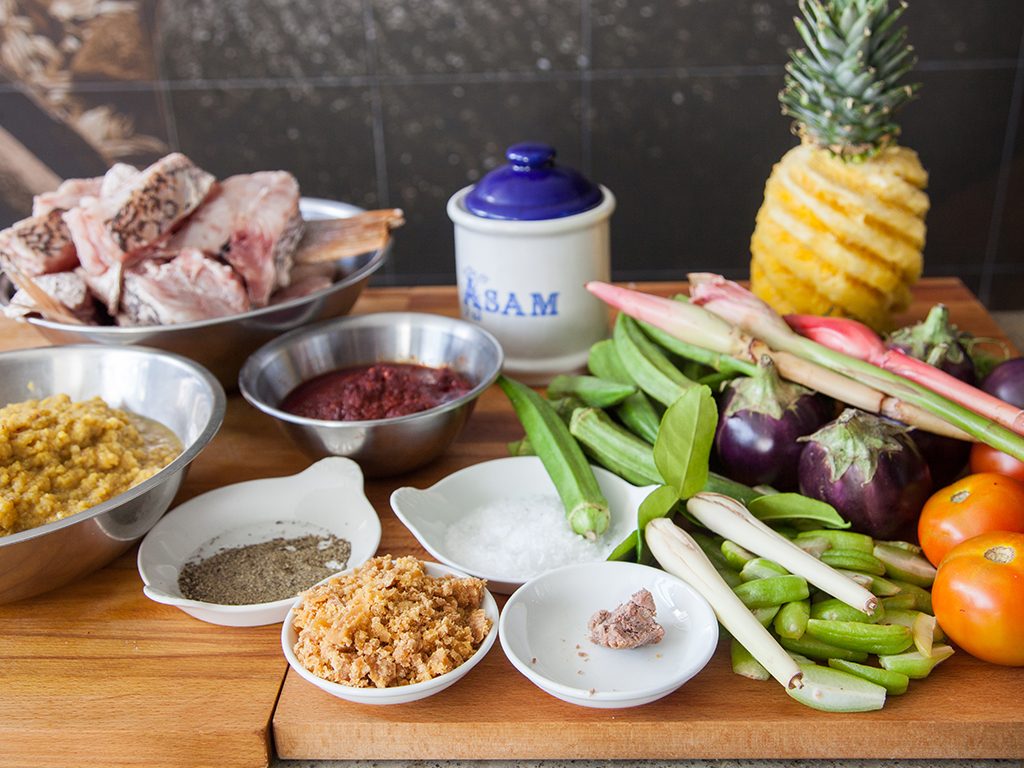
Ingredients
- 2.5kg whole red snapper, cut into 3cm thick portions
- 37g lemongrass (about 3 sticks), bottoms only
- 315g chili boh paste
- 250g pineapple, skin removed, half cut into rough chunks & half sliced into quarters
- 575g tomatoes (about 5 tomatoes), cut into 8 portions each
- 160g belimbi (belimbing buluh), sliced into halves
- 43g Vietnamese coriander (daun kesum)
- 66g torch ginger, cut into thicker slices
- 4g kaffir lime leaves (about 4 leaves), slightly torn
- 550g eggplant, tips removed & eggplant cut into chunks
- 467g okra, tips removed
- 650g tamarind paste
- 850g water
- 37g coconut sugar (gula Melaka), grated
- 1g ground black pepper
- 30g salt
- 200g cooking oil
Aromatics
- 70g garlic, peeled
- 680g mixture of small and large red onions
- 16g turmeric, peeled
- 26g ginger, peeled
- 32g galangal, peeled
- 22g belacan
Fish cleaning
- cold tap water
- 1 tbsp rock or table salt
- 1 tbsp tamarind paste
- 2 to 3 limes and/or lemons
Serves: 8 to 10 pax
Cleaning your fish
- Do this before slicing your fish. If your fishmonger has sliced your fish for you, proceed with the rest of the steps but soak your fish for only 30 seconds.
- Clean your fish by giving it a short soak in your kitchen sink or a bowl large enough to contain the fish. The water should just about cover the fish.
- Cut your lime and/or lemon in half, squeeze the juices into the water and toss in the skins as well.
- Rub salt and tamarind paste along the outer skin and inner cavities of the fish.
- Let the fish soak for about 2 to 3 minutes, then rinse thoroughly 2 or 3 times.
- This technique for cleaning your fish is especially useful when using defrosted frozen fish or those that are a little less ‘fresh’. When using frozen fish, don’t forget to defrost it first before soaking. You can also use the same methods for cleaning your fish for other recipes, not just assam fish.
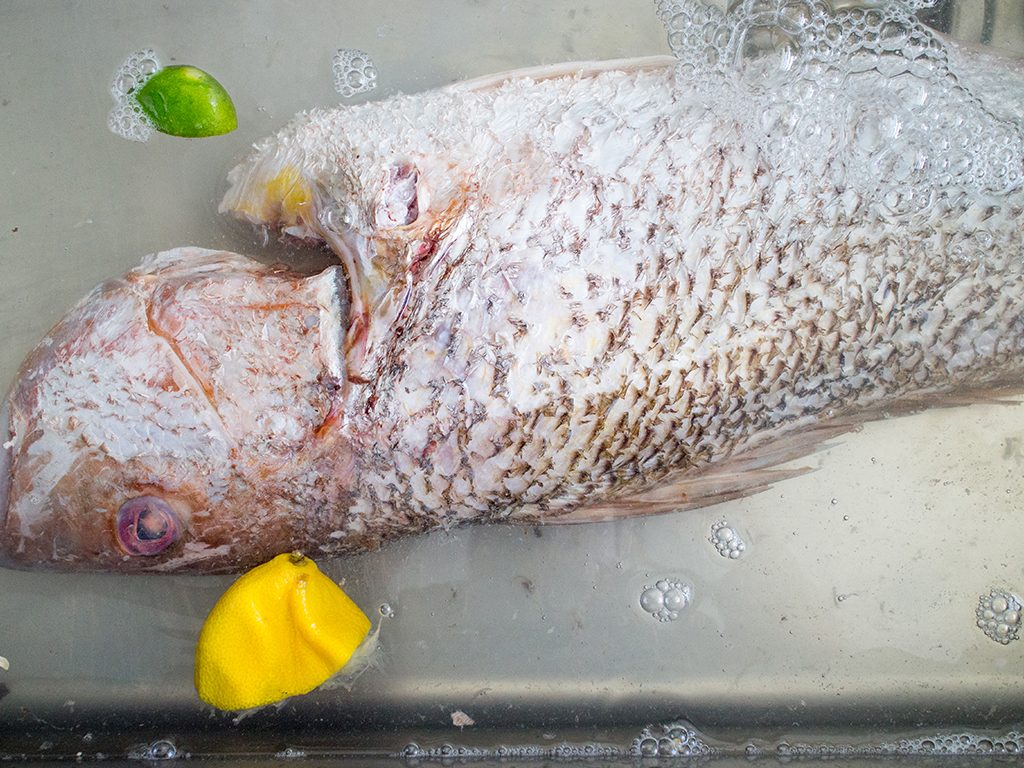
Frying the aromatics
- Prepare the rest of your ingredients.
- Blend all aromatic ingredients until fine. If necessary, add a little bit of water to aid the blending process. Set aside.
- In a heavy-bottomed pot, heat cooking oil on high heat.
- Once oil is sufficiently hot, bash lemongrass root lightly with a cleaver or mallet and add to cooking oil.
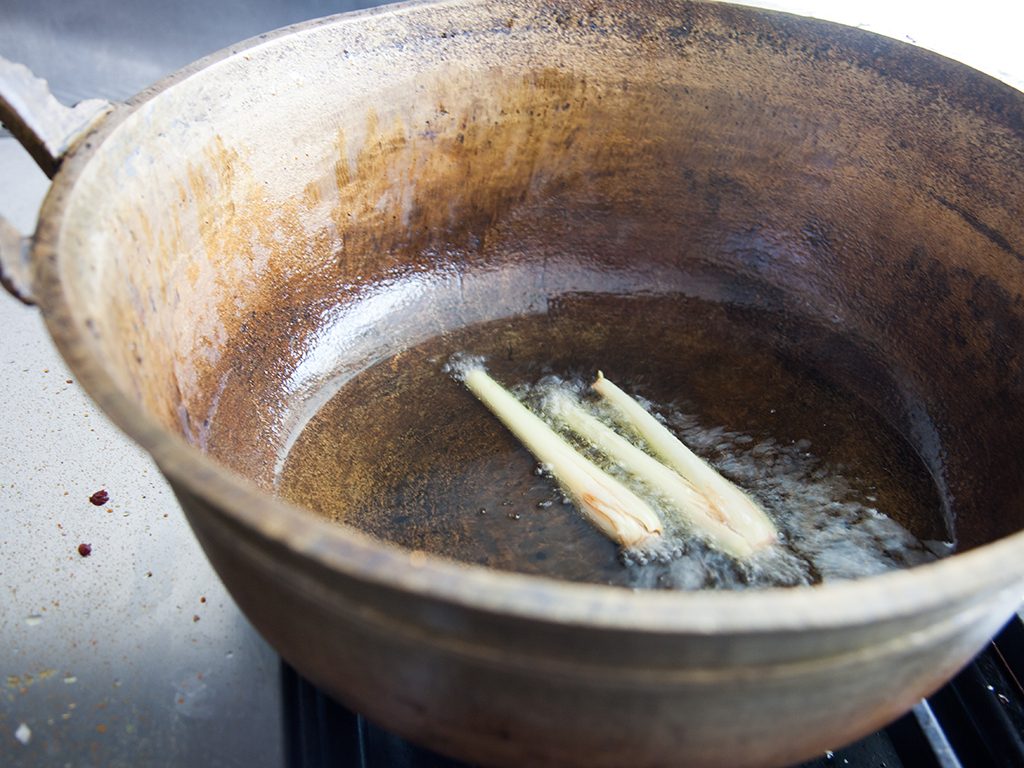
- After 20 to 30 seconds, add blended aromatics and stir to mix thoroughly. Continue stirring occasionally for about 7 to 8 minutes.
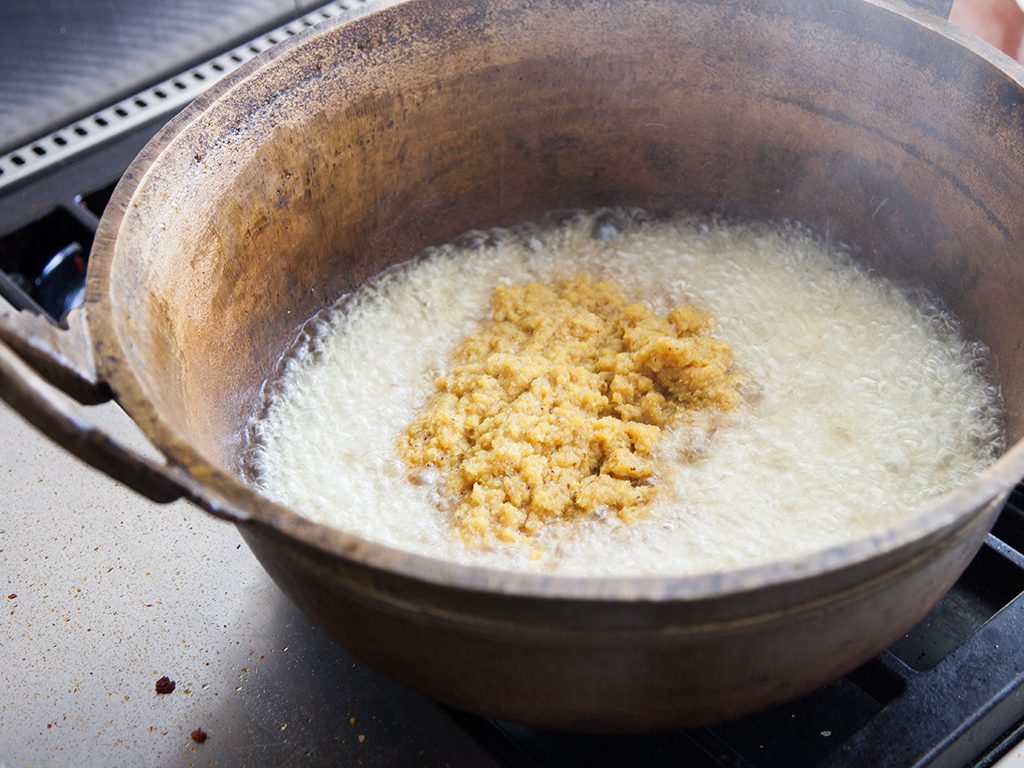
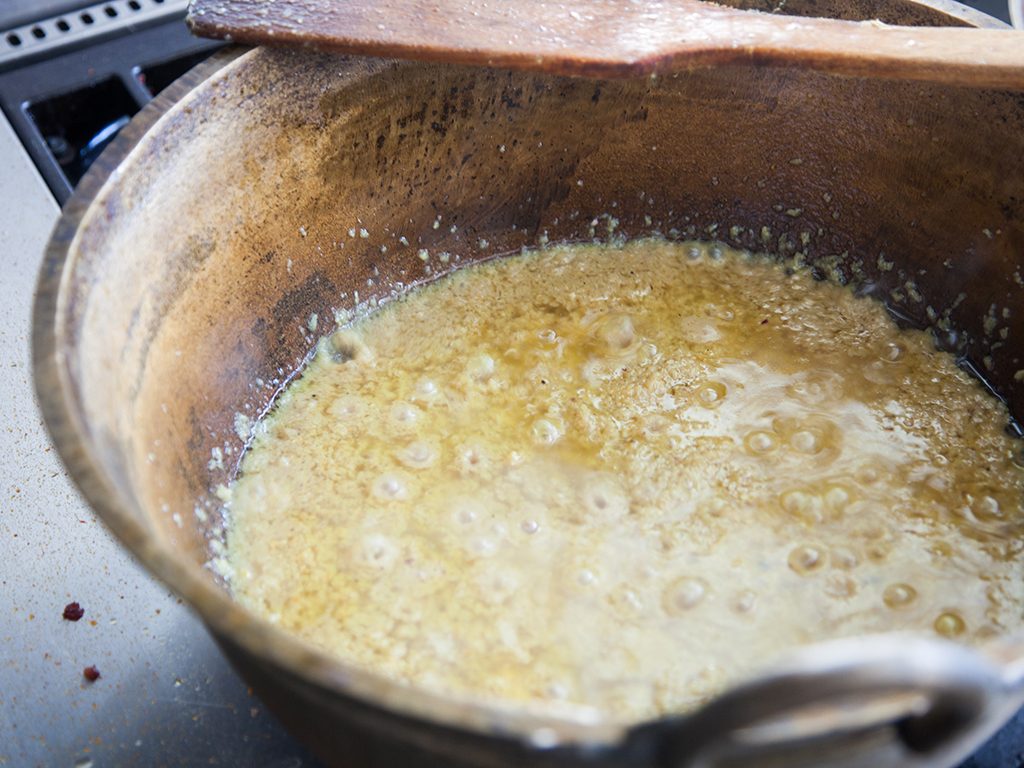
- Add chili boh paste and cook for 10 minutes, stirring occasionally. Don’t forget to scrape the sides and the bottom of the pot to ensure the paste cooks evenly.
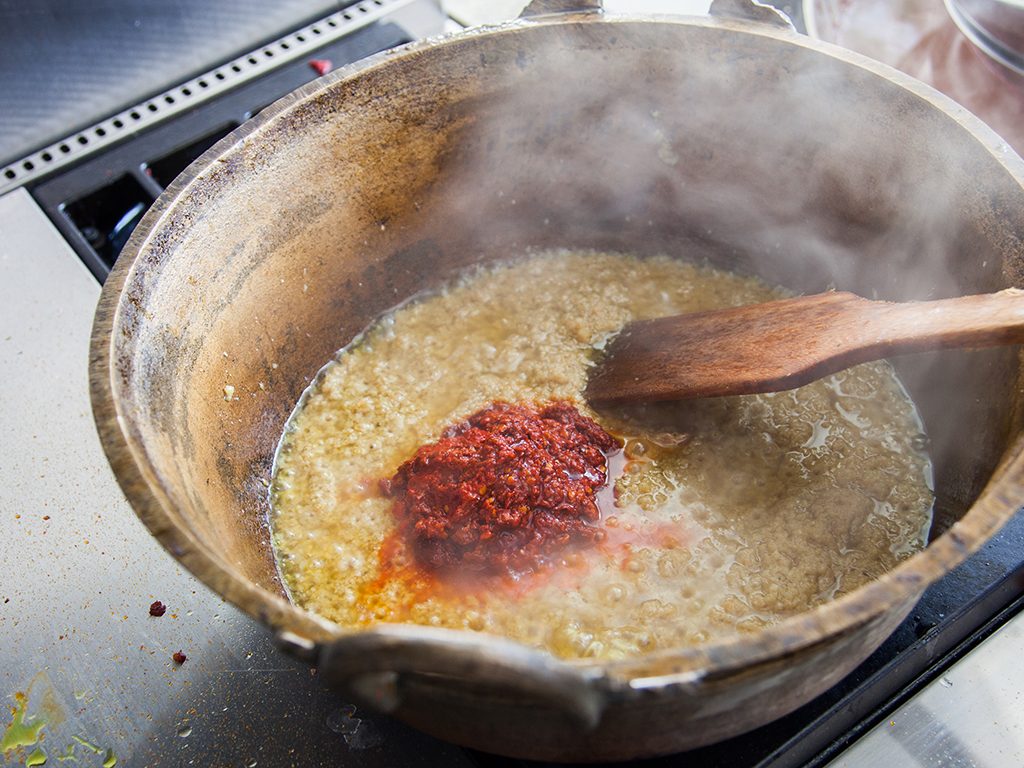
Making assam fish
- Add the rough chunks of pineapples, 2 cut tomatoes and half the belimbi. Stir through. After 1 minute, add 0.3g (1/8 tsp) salt, the same amount of black pepper, and stir to mix.
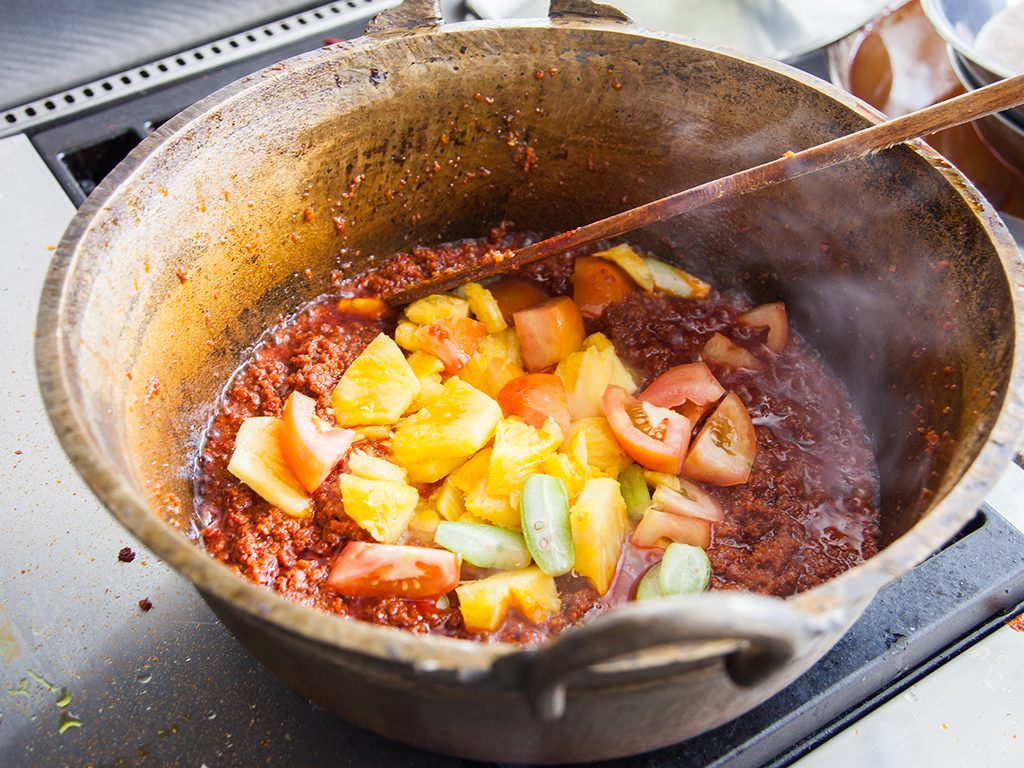
- Cook for 10 to 12 minutes or until the tomatoes, pineapple and belimbi are squishy and disintegrates.
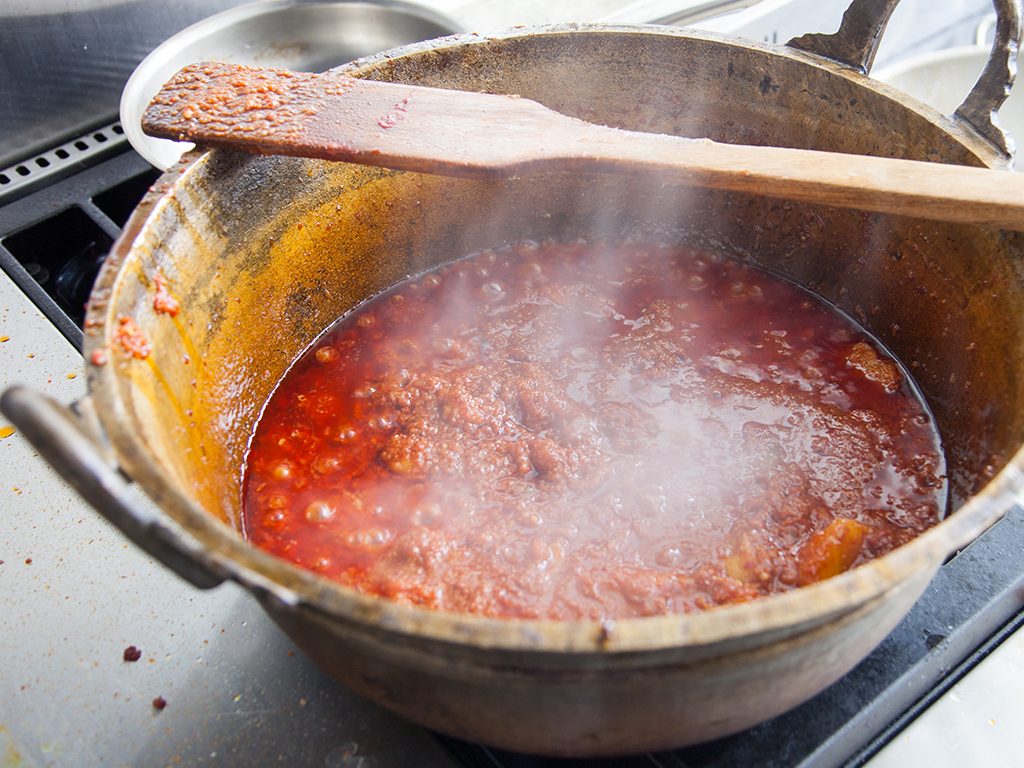
- Mix tamarind paste with water and squeeze with your fingers to mix. Pour mixture into the pot through a sieve, squeezing out tamarind juices from the pulp. Stir to mix through for about 2 minutes. This step brings the assam to the assam fish.
- Next, add Vietnamese coriander, torch ginger, kaffir lime leaves and the rest of the belimbi. Stir.
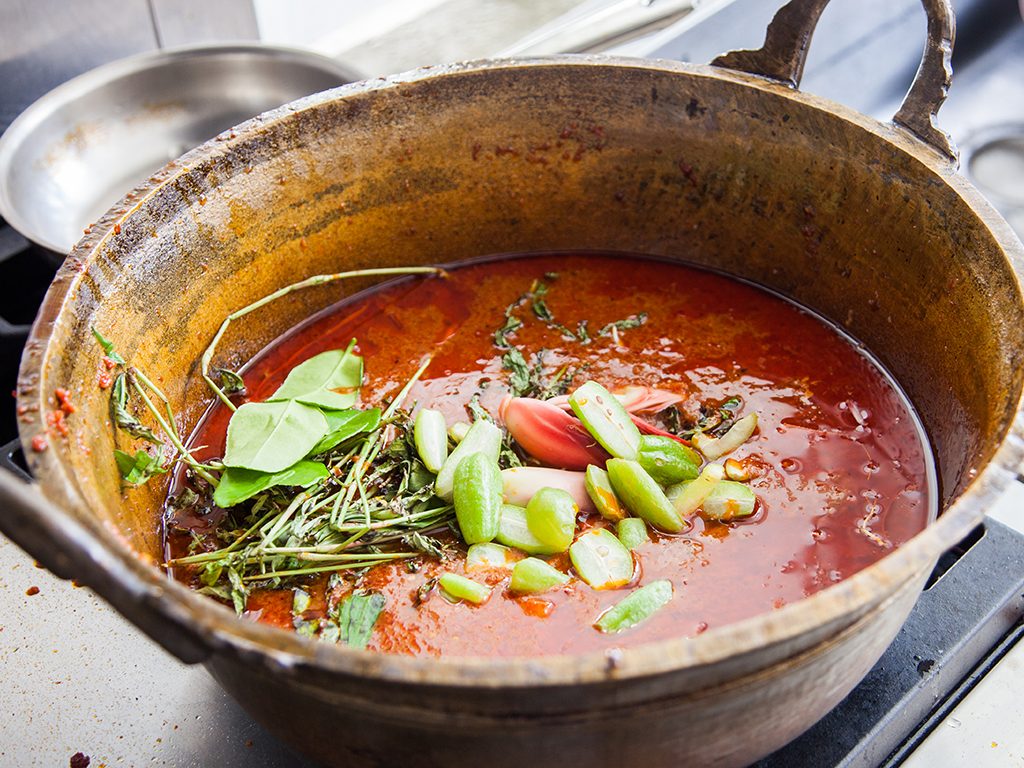
- Then, add 31g of grated coconut sugar, the rest of the pepper and 24g salt. Stir to mix through and cook for 5 minutes or until the mixture starts to boil. If you notice a lot of oil rising to the surface, remove some.
- Add balance tomatoes and pineapples. Stir.
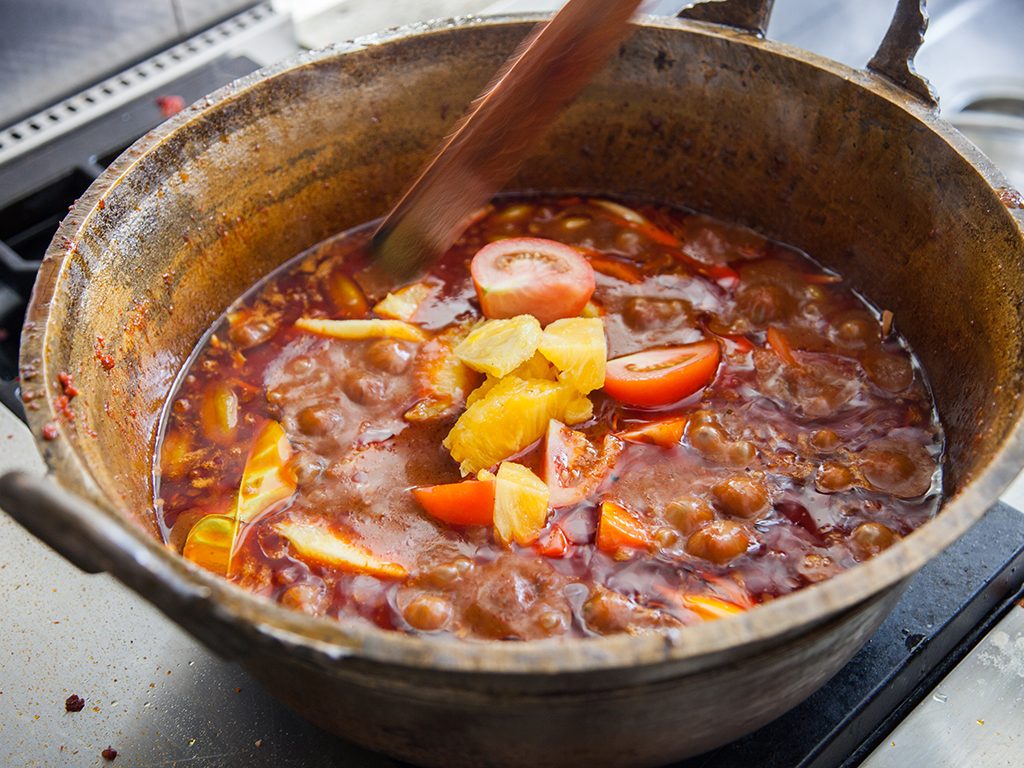
- Next, add the rest of the salt and coconut sugar. Let cook for 5 minutes.
- Add your fish pieces next, including the head. Stir to mix through and then cover to cook for 5 minutes.
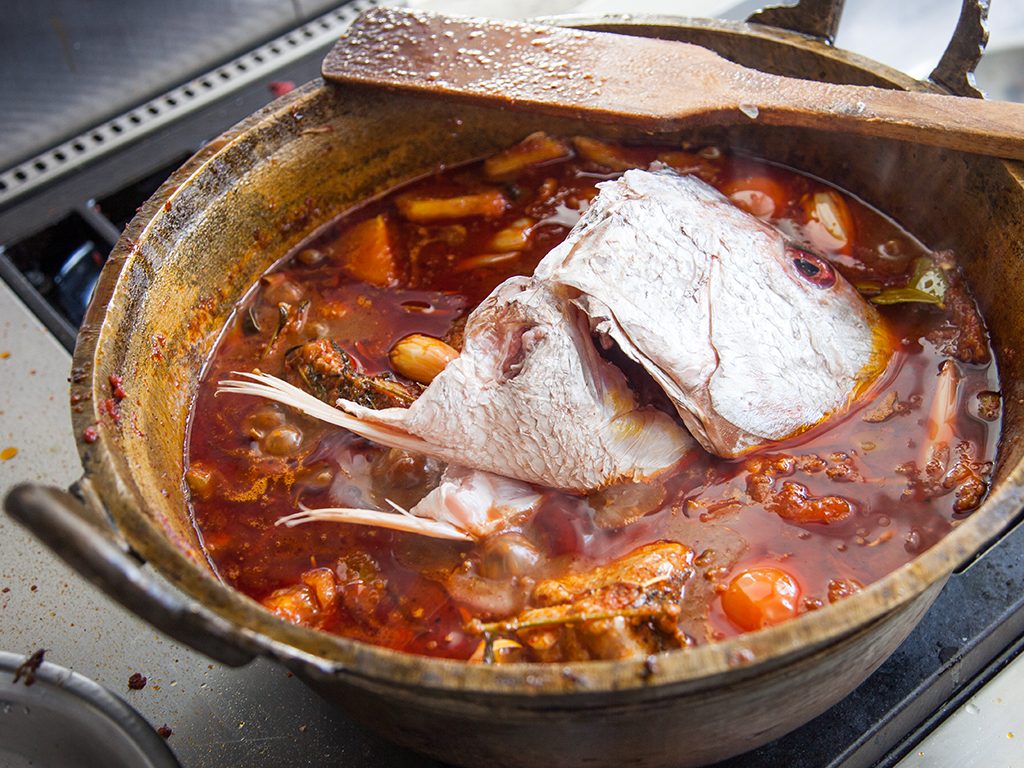
- Open the cover and add in the eggplants. Do not stir it through this time. Just cover the pot back again and let is cook for another 5 minutes.
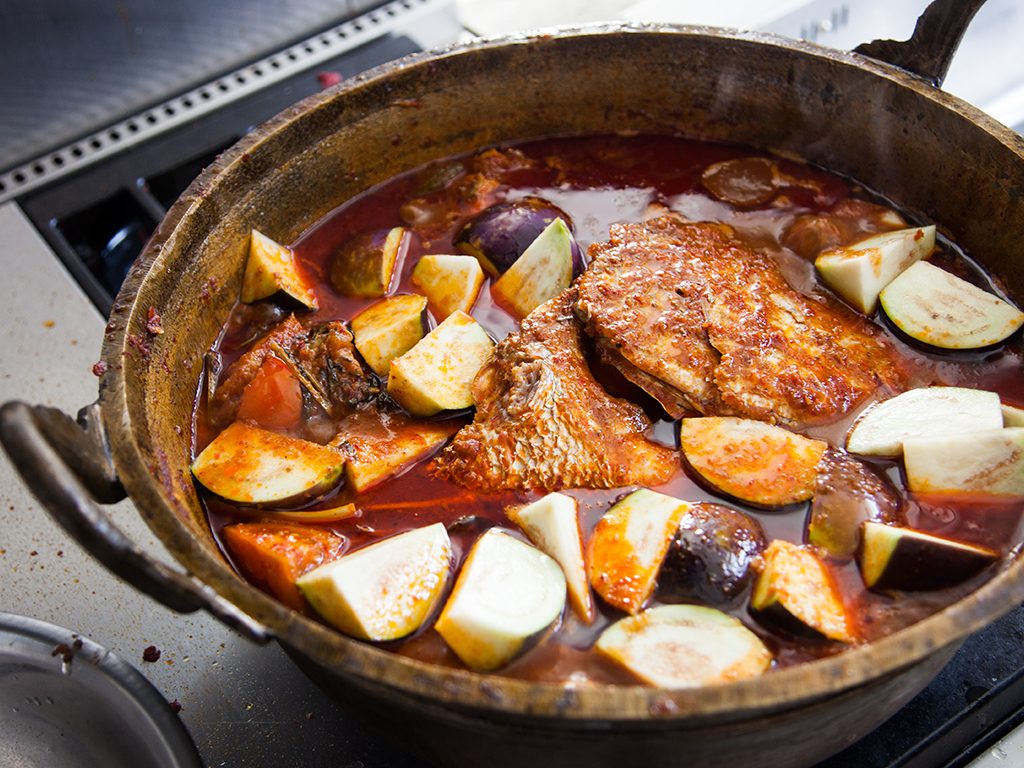
- Finally, add in the okra. Again, without stirring, cover the pot and let it cook for 8 minutes.
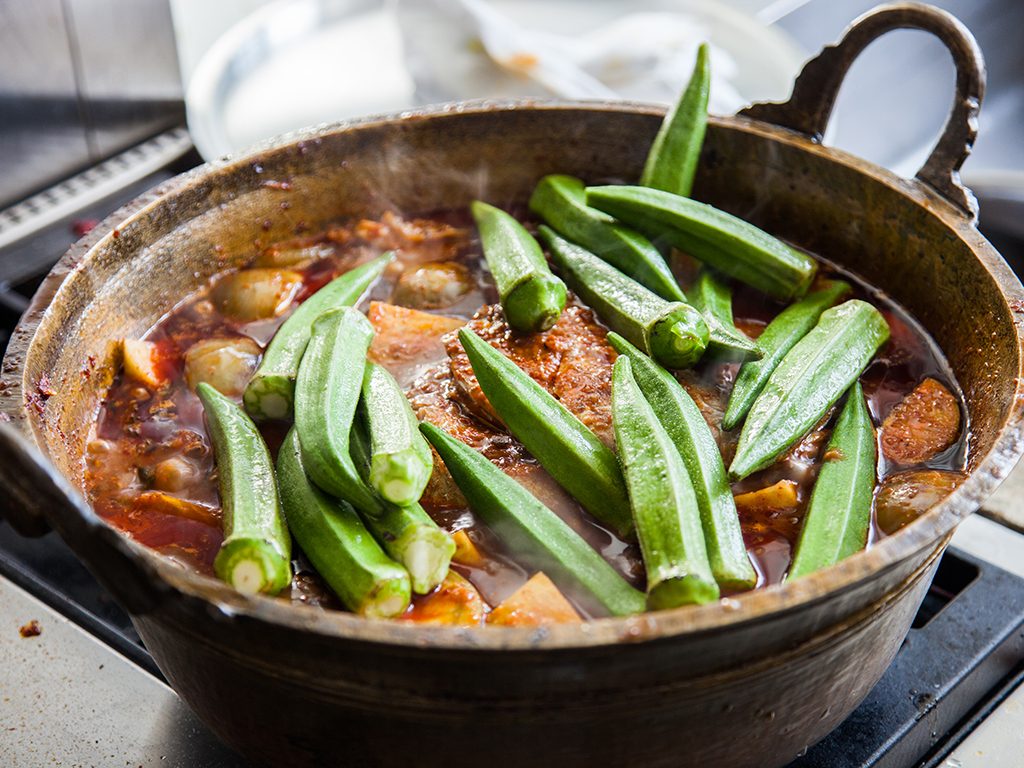
- Remove cover, stir the whole dish through, then cover the pot once again. Turn the fire off and let the dish sit for 3 to 5 minutes before serving.
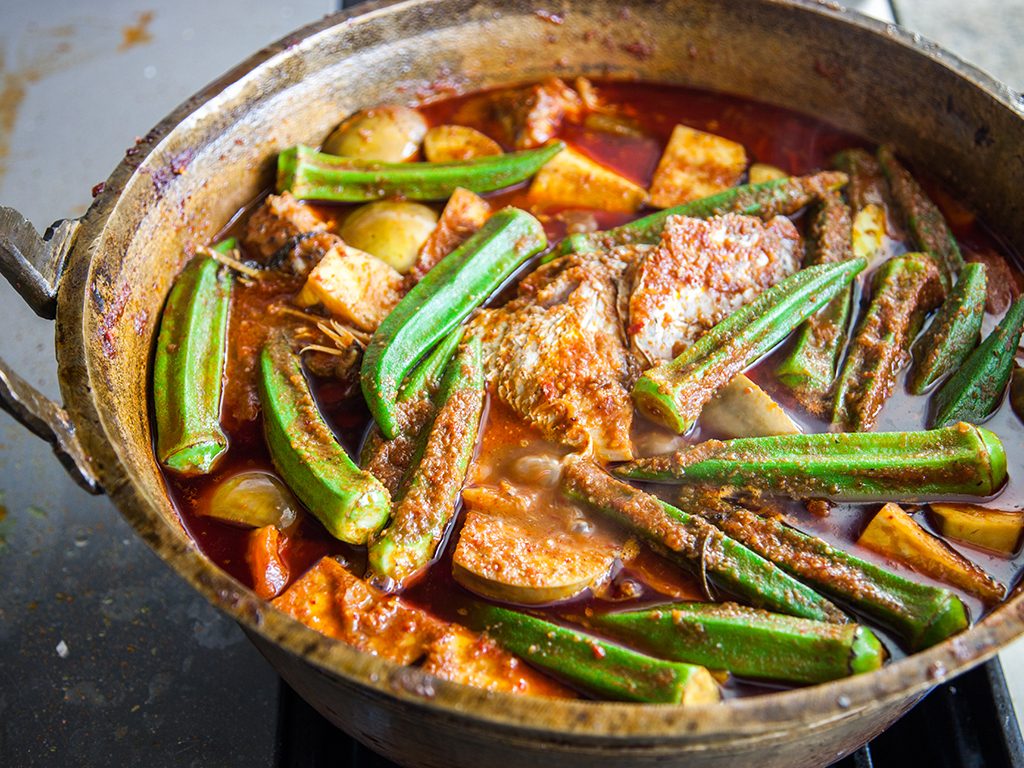
Extra tips
- Instead of waiting for the pineapples, tomatoes and belimbi to disintegrate, you can also speed up the process by blending these three ingredients before adding them to the pot. Don’t blend them too finely though – leave some small chunks behind. Optionally, you can also mash them up as it cooks in the pot.
- The sweetness of your pineapple can affect the final flavour of your dish. The sweeter the pineapple, the sweeter your assam fish!
So, how did your assam fish turn out? Did you go all out and make a gigantic portion for a family feast? Or did you scale it down for a smaller, humbler meal? Tell us how you like our recipes by hashtagging us with #butterkicap!
More articles:
Spicy Prawn and Petai Recipe to Whet your Appetite!
Daging Mat Kassim: Delicious, Easy, Beefy Goodness!
Spiced Fried Chicken Recipe: Aromatic, Crispy and Oh So Good!
